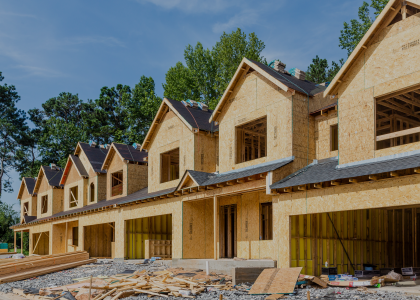In February 2009, Congress passed and the President signed an economic stimulus package estimated to cost nearly $800 billion over two years. Below we summarize provisions related to energy efficiency. Copies of the legislation and some other details can be found at www.recovery.gov .
The stimulus package provides approximately $20 billion specifically for energy efficiency as follows:
- o $5 billion for low-income Weatherization Assistance Program
- o $3.1 billion to states through existing State Energy Program (SEP)
- o Each state's share determined by a formula
- o Many permitted uses
- o To get funds Governor needs to provide assurances regarding utility regulatory policies, building code requirements and the prioritization of existing state programs.
- o $300 million for the DOE Energy Star Program and for matching grants for state rebates to consumers for buying energy efficient Energy Star products to replace existing appliances.
- o States each have an allocation but need to prepare proposal meeting DOE criteria (TBD)
- o $3.2 billion to municipalities, counties and states in new Energy Efficiency and Conservation Block Grant program
- o $1.9 billion for municipalities of 35,000 or more, counties of 200,000 or more, or 10 largest cities and counties in each state
- o $784 million for states, which pass on $470 million to cities and counties not eligible for direct funding
- o $56 million for tribal programs
- o Requires application meeting DOE criteria (TBD)
- o $456 million awarded in a competitive pool
- o Further info at http://apps1.eere.energy.gov/wip/block_grants.cfm
- o $8.8 billion for energy efficiency in federal facilities and vehicles including through GSA and DoD In addition, further funds will go to a variety of projects that relate to energy efficiency or a portion of which will go for energy efficiency:
- o $1.2 billion for DOE R&D on efficiency and renewable energy. Of this $50 million is "to support research to improve the efficiency of information and communications technology and improve standards". The remaining allocation is up to DOE. This amount does not include additional money specifically allocated for R&D on advanced batteries, biomass and geothermal energy.
- o ~$6 billion for investments in various types of publicly assisted housing, a portion of which will go to energy efficiency
- o Includes Section 8, HOME, Public Housing and Native American housing
- o $4.5 billion for Smart Grid R&D, demonstration projects and matching grants
- o $400 million to start-up the ARPA-E R&D program at DOE
- o $500 million for research, labor exchange and job training projects to prepare workers for careers in energy efficiency and renewable energy industries.
- o To be administered by Dept. of Labor
- o $700 million to state and local governments to acquire efficient alternative fuel vehicles and promote plug-in electric drive vehicles.
- o Up to $2.3 billion for Advanced Energy Investment Credits, a new 30% percent investment tax credit for the manufacture of "advanced energy property," including technology for the production of renewable energy, energy storage, energy conservation, efficient transmission and distribution of technology, and carbon capture and sequestration.
- o $17.7 for public transportation including:
- o $8 billion for high-speed rail
- o $6.9 billion for transit capital assistance
- o $1.5 billion for capital investments in new start transit system projects and other transit infrastructure
- o $1.3 billion for Amtrak
There are also a variety of changes and enhancements to existing federal energy efficiency tax incentives. See www.energytaxincentives.org for more information.


